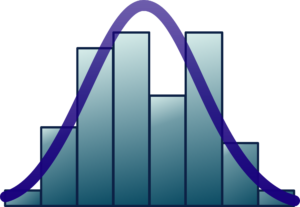This Isn’t Your High School Statistics Course
 What does the word statistics bring to mind when you hear it? Horrible high school classes that you sat through wondering why do I need this stuff? Complex math problems what were almost impossible to figure out? Or is it nonsense that is only used in political polls?
What does the word statistics bring to mind when you hear it? Horrible high school classes that you sat through wondering why do I need this stuff? Complex math problems what were almost impossible to figure out? Or is it nonsense that is only used in political polls?
Statistics are used in every aspect of Reliability Engineering. So if you don’t have a good relationship with statistics, I highly recommend that you are starting investing time in building your knowledge in statistics.
What are Statistics?
Statistics are commonly referred to as numerical facts which represent the facts and figures in the real world. The definition of statistics is “the science of collecting, analyzing, presenting, and interpreting data, as wall as making a decision based on such analysis.” There are two primary types of statistics;
- Descriptive Statistics – consists of methods for organizing, displaying, and describing data by using tables, graphs, and summary measures.
- Inferential Statistics – consists of methods that use sample results to help make decisions or predictions about a population.
Both types of these statistics are used in Reliability Engineering. Descriptive statistics are used to display and communicate information regarding the life of the product, asset or processes. While Inferential statistics are used to make predictions of how like products, assets or processes will act based on the actions observed on a sample of the products, assets or processes. The majority of the statistics covered in the CRE Primer focuses on the Inferential Statistics.
What Statistical Topics are Used in Reliability Engineering?
Referring to the BoK and the CRE Primer, there are many topics and analysis covered. But in order to perform the analysis, there needs to be a fundamental understanding of statistics. Covered in the CRE Primer are the following statistical topics;
- Statistical Terms – Statistics, just like every other topic, has specialized language that must be understood in order to work with statistics.
- Basic Probability Concepts – Probability is a number that reflects the chance that a particular event will happen.
- Discrete and Continuous Distributions – Probability distributions can be classified as discrete probability distributions or as continuous probability distributions, depending on whether they define probabilities associated with discrete variables or continuous variables.
- Poisson Process Models – The Poisson probability is a distribution of discrete random variables. The Poisson probability distribution is applied to experiments with random and independent occurrences.
- SPC & Process Capability – SPC is a method of measuring and controlling quality by monitoring the manufacturing process.
- Point & Interval Estimates – There are two primary types of estimation; a Point Estimate and an Interval Estimate. A point estimate of a population parameter is a single value of a statistic. An interval estimate is defined by two numbers, between which a population parameter is said to lie.
- Hypothesis Testing – A statistical hypothesis is an assumption about a population parameter. This assumption may or may not be true. Hypothesis testing refers to the formal procedures used by statisticians to accept or reject statistical hypotheses.
- Sample Size Determination – Sample size determination is the act of choosing the number of observations or replicates to include in a statistical sample. The sample size is an important feature of any empirical study in which the goal is to make inferences about a population from a sample.
- Non-Parametric Methods – Nonparametric statistics refer to a statistical method wherein the data is not required to fit a normal distribution. Nonparametric Statistics uses data that is often ordinal, meaning it does not rely on numbers, but rather a ranking or order of sorts.
- The design of Experiments – Design of experiments (DOE) is a systematic method to determine the relationship between factors affecting a process and the output of that process.
- Analysis of Variance – Analysis of Variance (ANOVA) is a statistical method used to test differences between two or more means.
- Regression Analysis – In statistical modeling, regression analysis is a statistical process for estimating the relationships among variables. It includes many techniques for modeling and analyzing several variables when the focus is on the relationship between a dependent variable and one or more independent variables.
Each of these topics are covered at a high level in the CRE Primer. A much deeper dive into these topics can be found in numerous texts. To effectively be a Reliability Engineer, or use specific techniques from Reliability Engineering, the statistical topics covered above should be understood.
Where can I Learn Statistics?
If understanding statistics is vital for reliability engineering, it should be inferred that if you do not know these topics, you should study them. You do not need to become a statistician, but have a working knowledge of the topics. There are numerous options for learning these topics, some are free, some paid, but regardless they will require time and dedication. Here are some common places where you can learn statistics;
- Local colleges or universities typically offer courses online or in-person during the night or through distance learning. Having access to an instructor and group of peers can be huge advantage in learning statistics
- LinkedIn Learning offers numerous course on statistics (and many other topics). For a low monthly fee, you get access to an unlimited amount of courses that are well produced.
- Khan Academy offers practice exercises, instructional videos, and a personalized learning dashboard that empower learners to study at their own pace in and outside of the classroom. We tackle math, science, computer programming, history, art history, economics, and more. Our math missions guide learners from kindergarten to calculus using state-of-the-art, adaptive technology that identifies strengths and learning gaps. We’ve also partnered with institutions like NASA, The Museum of Modern Art, The California Academy of Sciences, and MIT to offer specialized content.
- Massive Open Online Courses (MOOCs) are free online courses available for anyone to enroll. MOOCs provide an affordable and flexible way to learn new skills, advance your career and deliver quality educational experiences at scale. I highly recommend Coursera for a wide range of topics.
With the looming revolution of Internet of Things (IoT), statistics and data science will play a bigger role in our day to day lives of maintenance, reliability, and asset management professionals. If you do not have a working knowledge of the statistical topics covered above, I highly recommend you explore the options I mentioned above for gaining that knowledge. I would like to what your initial thoughts on statistics are. Did you dislike them in school, why or why not? Please comment and share the challenges you have personally experienced with statistics.
Next week I will cover the role of software in Reliability Engineering. While many of the analysis can be completed using Excel or the good old fashion pen and paper, there are some unique advantages to using specialized software. I do ask that if you want a topic from the BoK covered or a specific example of reliability engineering at work, to please let me know at [email protected].
Remember, to find success; you must first solve the problem, then achieve the implementation of the solution, and finally sustain winning results.
I’m James Kovacevic
Eruditio, LLC
Where Education Meets Application
Follow @EruditioLLC
References:


I would note the great role of working with distribution tails (for example 6 Sigma).
Thank you for sharing. Statistics was not considered in high school currículum and think could be an advantage cause it do not have any Bad experience from the subject. I will take into consideration your valuable advice.